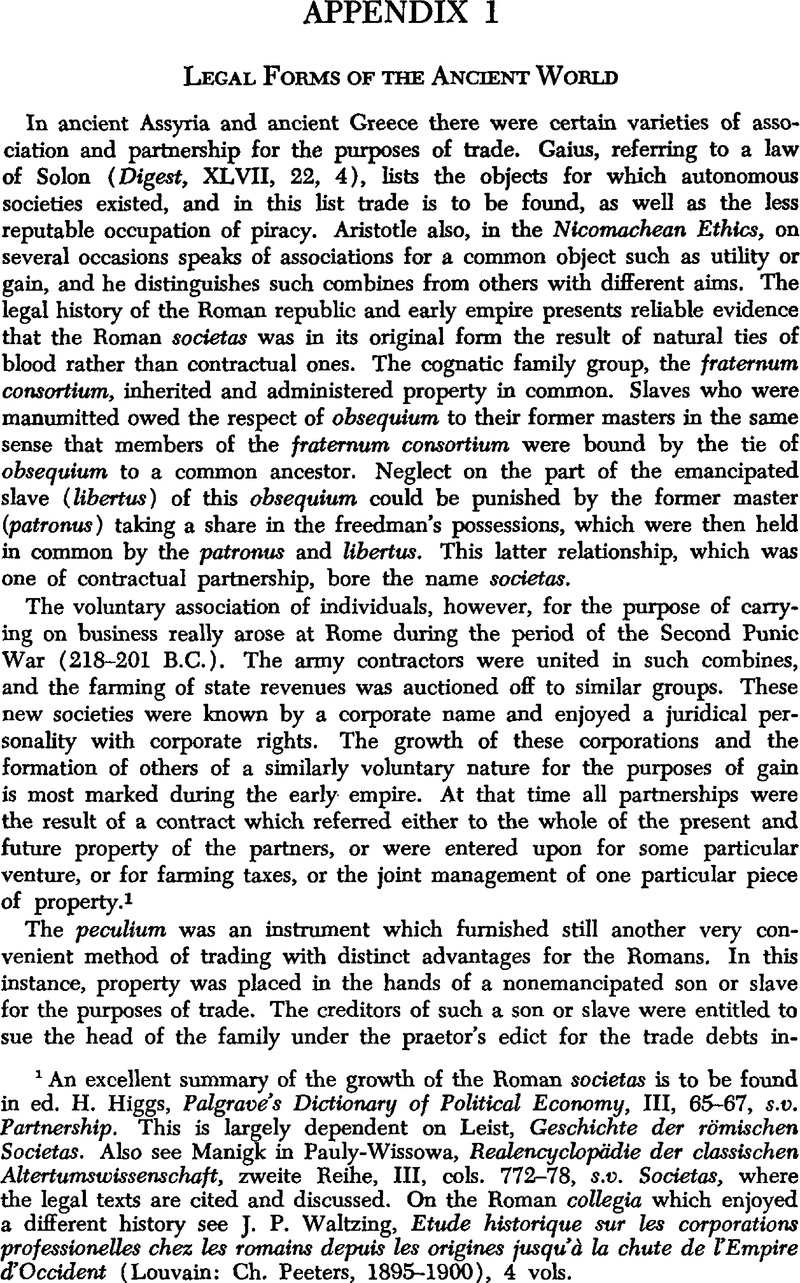No CrossRef data available.
Article contents
Appendix 1
Published online by Cambridge University Press: 24 July 2012
Abstract

- Type
- Appendix 1
- Information
- Copyright
- Copyright © The President and Fellows of Harvard College 1957
References
1 An excellent summary of the growth of the Roman societas is to be found in ed. H. Higgs, Palgrave's Dictionary of Political Economy, III, 65–67, s.v. Partnership. This is largely dependent on Leist, Geschichte der römischen Societas. Also see Manigk in Pauly-Wissowa, Realencychpädie der chssischen Altertumswissenschaft, zweite Reihe, III, cols. 772–78, s.v. Societas, where the legal texts are cited and discussed. On the Roman collegia which enjoyed a different history see Waltzing, J. P., Etude historique sur les corporations professionelles chez les romains depuis les origines jusqu'à h chute de l'Empire d'Occident (Louvain: Ch. Peeters, 1895–1900), 4 vols.Google Scholar
2 Higgs, Palgrave's Dictionary of Political Economy, III, 67. Abo see Digest, LV, 6, 8 and 10; IV, 7, 3–8. Digest, XV, Titles 1 and 2 are completely devoted to the action De Peculio. Also see Westerman, W. L., The Slave Systems of Greek and Roman Antiquity (Philadelphia: The American Philosophical Society, 1955), pp. 16 and 83Google Scholar; Pernice, L. A., Marcus Antistius Labeo (2nd ed.; Halle, 1895–1900), I, 121Google Scholar; Buckland, W. W., The Roman Law of Slavery; The Condition of the Slave in Private Law from Augustus to Justinian (Cambridge: Cambridge University Press, 1908), pp. 187–233.Google Scholar


